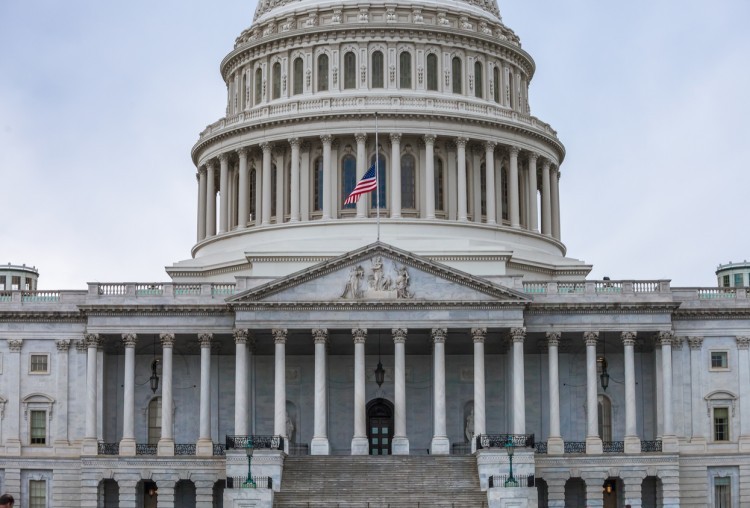The United States Congress, comprised of the House of Representatives and the Senate, forms the legislative branch of the U.S. government. While both bodies contribute to lawmaking, their distinct roles and responsibilities ensure a balance of power. This article explores the key differences between the Senate and the House, focusing on their unique functions and how they work together to shape American legislation.
 The U.S. Capitol building with the American flag.
The U.S. Capitol building with the American flag.
Key Differences in Composition and Powers
The House and Senate differ significantly in their structure and the powers granted to them by the Constitution. Understanding these differences is crucial to grasping the dynamics of American governance.
Representation: Population vs. Equality
- House of Representatives: Representation in the House is proportional to each state’s population. Larger states have more representatives, ensuring that populous areas have a stronger voice in matters directly affecting their constituents. This body is often considered closer to the people due to its frequent elections (every two years) and larger size (435 members).
- Senate: Each state, regardless of population, has two senators. This equal representation protects the interests of smaller states and prevents them from being overshadowed by larger ones. Senators serve six-year terms, with staggered elections ensuring continuity and reducing the impact of short-term political fluctuations.
Legislative Powers: Origination and Confirmation
- House of Representatives: All bills related to raising revenue (taxation) must originate in the House. This power reflects the historical concern that taxation should be closely tied to the will of the people, as represented in the more directly elected House. The House also holds the sole power of impeachment, formally accusing federal officials of wrongdoing.
- Senate: The Senate has the exclusive power to confirm presidential appointments, including cabinet secretaries, federal judges, and ambassadors. It also ratifies treaties negotiated by the president, requiring a two-thirds majority vote for approval. In impeachment proceedings, the Senate acts as the jury, deciding whether to remove an impeached official from office.
Legislative Process and Debate
The legislative process involves both chambers, but their procedures and rules of debate differ, influencing the pace and character of lawmaking.
Speed and Efficiency: Majority Rule vs. Deliberation
- House of Representatives: The House operates under stricter rules of debate and typically requires a simple majority vote to pass legislation. This allows for a faster, more efficient legislative process. The majority party in the House wields significant power in setting the legislative agenda and controlling the flow of bills.
- Senate: The Senate allows for extended debate and often requires a supermajority (60 votes) to overcome a filibuster, a tactic used to delay or block a vote. This emphasis on deliberation can lead to more thorough consideration of legislation but can also slow down the process. Individual senators hold more power to influence the legislative agenda than individual representatives.
Checks and Balances: Ensuring Accountability
The distinct powers and procedures of the House and Senate contribute to a system of checks and balances, preventing any one branch of government from becoming too powerful.
:max_bytes(150000):strip_icc()/checks-and-balances-infographic-1953943-v3-5b70949bc9e77c00500af4f9.png)
For example, the Senate’s power to confirm presidential appointments checks the executive branch’s power to appoint officials. The House’s power to initiate revenue bills checks the Senate’s power to amend them. The requirement that both chambers approve legislation before it becomes law ensures that laws reflect a broad consensus.
Conclusion: Two Chambers, One Purpose
The House and Senate, while distinct in their composition and powers, share the fundamental purpose of enacting laws for the United States. Their differences are not weaknesses but rather strengths, ensuring a balance of power, diverse representation, and thorough consideration of legislation. The interplay between these two bodies defines the dynamic and often complex nature of the American legislative process.
